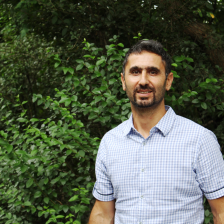Interview with Mr. Jacko Pillossof, Chairman of the Board of Directors of KONTRAX.

Are there smart highways in Bulgaria, what has been built in Bulgaria?
In recent years, Intelligent Transport Systems (ITS) for road transport have undergone rapid development. Since several such systems have been built in Bulgaria only, it is important to gradually invest in their development but, above all, in the integration of different types of ITS into comprehensive nationwide systems. This will make it possible to use the Republican Road Network more effectively and to increase the level of traffic safety far more.
In Bulgaria, there are 321 counting points built so far in order to collect information and to allow traffic analysis across the Republican Road Network. This system should keep being maintained and developed by adding counting points to each newly built sections of highways and roads.
Also, at these 9 locations, 9 road weather stations were built in order to provide information on the weather status and the road conditions on a regular basis. Unfortunately, this number is extremely insufficient to create a complete system of control and to ensure the winter cleaning. In the near future, another 4 such stations at Struma 3.3 and Struma 3.1 will be added. There is a danger that the rest of the 150 stations - to be built together with the Toll Tax System - will be unable to provide information on the thickness of the water film on the roadway and the freezing point based on lye and chemical treatment.
It is expected that the e-vignette collection and tolling system - currently under construciton - will contribute to the sharp increase in revenue of the Road Infrastructure Agency. This should be completed by August 2019, and, by the end of the next year, it will become clear whether these expectations will meet reality.
What has yet to be built?
At the moment, a system for early detection of traffic accidents in tunnels is foreseen in the Tunnel of Jeleznitsa at the Highway of Struma, as well as in another three Tunnels of Struma 3.2. Unfortunately, once again, these projects will be delayed in time, and soon there won’t be any tunnel in Bulgaria that would actually fully comply with the European Directive on Tunnel Safety from the point of view of ITS therein. There are no real control centers built in tunnels yet, as there are no plans and scenarios for response to different types of accidents in the tunnel (accident, fire, etc.)
In what to invest in order to develop the Intelligent Transport Systems in Bulgaria?
As evidenced, many heavy-duty trucks are moving on the Bulgaria's National Road Network, carrying oversized loads or heavier than permissible per axle or per whole vehicle. At the moment, the first two road stations to measure the weight of a moving vehicle at the Highway of Struma 3.3 are under construction; but none of these are foreseen at Struma 3.1 and 3.2. The construction of such stations is the only way to penalize offenders and to discontinue the demolition of the new highway sections from overloaded heavy-duty trucks that form tracks and other damage to asphalt. There is no such mixture of asphalt concrete that would withstand the constant traffic from overloaded vehicles. Condition of concrete overpasses is an indication that many vehicles are overloaded, hit and ruin the concrete of overpasses, the lighting fixtures in tunnels and directly threaten other traffic participants. This is a consequence of the absence of road stations in Bulgaria built to measure the overall dimensions of vehicles. Such road stations have been foreseen in the newly built system for collecting revenues from Electronic Vignettes and Toll fees, and, hopefully, these laser scanners, which will be placed, will have the required precision and allow the controlling authorities to sanction the offenders. The 100 road stations foreseen to measure the weight of a moving vehicle will have a relatively low accuracy and can hardly be used to sanction the offenders.
One of the problems to carry out continuous surveillance of road junctions on the highways in Bulgaria, in tunnels and recreation areas is the absence of a system built of optical cables in the servitude of the roadside banquet. No high-definition (HD and higher) video surveillance can be achieved by transmitting information through mobile operators due to the lack of sufficient capacity. For the first time, on the Highway of Struma 3.3, it is envisaged to build an optical route. This will be finally completed and connected to the Control Center of the Highway, at the road junction of Blagoevgrad, when the sections of Struma 3.1, the Tunnel of Jeleznitsa and Struma 3.2 will be completed. Unfortunately, this will only happen in about 5 years. For the new sections of the Highway of Hemus or the road of Plovdiv-Asenovgrad, for example, no construction of optical network has ever been foreseen. In time, such routes will need to be constructed, but at a much higher cost.
In Bulgaria, there are 20 LEDs boards built to display wishful messages of the type of "Drive carefully, someone loves you" or messages about the number of victims in that road section. However, there is no connection between the LED boards built-in and the road weather stations built-in that would provide useful information to drivers passing through the Passages of Petrohan, Predela, Kresna, Shipka, the passage of the Republic, etc. about the current situation. Up to now, there have been no signposts on these LED boards that would allow traffic management from a Central Dispatch Point. Currently, 10 new LED boards of type VMS (Variable Message Sign) are under construction on the Highway of Struma 3.3 that would allow displaying both road signs and short messages thereon. Such boards are also foreseen on the Highway of Struma 3.1. However, if no real-time Dispatch Center is built where Dispatchers will work according to well-defined action scenarios, we will again witness permanent, unchanging messages, displayed for months on the LED boards intended for variable messages.
When it comes to a real-time operating Dispatch Center, it should be known that it can be operated by two shift dispatchers on duty at least; and, in order to provide a three-shift mode of operation for each job position, there should be at least 5 dispatchers. They must be active and highly educated employees with a sense of responsibility. Currently, in Bulgaria, on-call duty in most tunnels is provided by employees in retirement age who are not trained and do not know how to react in case of emergency. I hope that for the Highways of Struma 3.3, and then for the rest of the Sections (3.1, Tunnel of Zheleznitsa and Struma 3.2) a real Dispatch Center will be built and provided with human resources. Last but not least, the server complex in such a center must be highly reliable, providing redundant power supply as well as secure backup of databases, excellent service maintenance of hardware and software subsystems, ensuring quality fire alarm, fire extinguishing, access control, air conditioning and communication system.
What is the future of ITS around the world?
New vehicles are increasingly equipped with 3G/4G mobile communication and must be able to make an e-call to Emergency 112 in the event of an accident in accordance with European Directives. It is expected that the new standards will be announced soon, united under the name of ‘5G’, which, in addition to the higher speed of information exchange, will allow vehicles to exchange information with each other (Vehicle To Vehicle - V2V) and between them and the road infrastructure (Vehicle to Infrastructure - V2I). These technologies are extremely effective and will lead to revolutionary ITS solutions on the road and therefore to an even higher level of road safety and improving vehicle efficiency and travel time. Incoming sensor data between all traffic participants (distance, speed and direction of travel, etc.) and infrastructure data (road surface quality, meteorological conditions, road signs and traffic lights, etc.) will need to be processed and stored in real time in dedicated Big Data Centers.
Speed is the key element in this solution, as information needs to be processed, analyzed, and sent back to such devices in real time. It is therefore necessary the accompanying hardware and software system to be so designed to provide reliable data security and to be made available without interruption.
Dell EMC ready made solutions for Big Data are infrastructure complexes of servers, network devices and software with guaranteed 24x7 support. These are high-end based servers enabling to install GPUs and ToRs and management switches in a combination of software tools for management and selection of images of software analysis data.
Data generated by vehicles and urban infrastructure will be analysed by means of Artificial Intelligence technologies in order to minimize possible incidents between participants or to detect potential abnormalities. For example, should the vehicle speed drop suddenly, the brake presses and the windscreen breaks, we can conclude that there is an accident due to an abnormality.
Dell EMC Isilon the world's leading NAS line system for storing, managing and protecting structured and unstructured data. The intelligent operating system of these arrays combines the three layers of traditional storage architectures: file system, big data volume manager and data protection into one unified software layer uniting the various nodes on a cluster. Dell EMC Isilon is the best solution for data storage, high processing speed and analysis of these data and secured access thereto. This makes them the preferred choice for the introduction of Artificial Intelligence.
New standards of communication (V2V, V2I) as well as Artificial Intelligence would allow the development of innovative trends such as Added Reality (AR) projected inside the vehicle itself, where computer graphics will be projected onto the real world of travellers. Communications ‘Vehicle to Vehicle’ and ‘Vehicle to Infrastructure’ is a foundation on which future intelligent self-driving cars will also be built.
However, computer-generated maps, barrier-free procedures and decision-making technologies still have a long way to go before they become safe enough for public roads.
In Bulgaria, it is important to closely monitor these processes and, in due course, to put the latest technology into the bidding process, thus allowing the acceleration of the National Road Network development. Otherwise, we are vowing to be in the queue of Europe, both in terms of having such systems built and the road safety.
KONTRAX is a leading system integrator in Bulgaria, holding a wide portfolio of technologies and high expertise in the implementation of complex solutions in Intelligent Transport Systems, offering, together with its long-standing partner Dell EMC, workstations, servers, networks, storage and data analysis, which are the basis for the successful application of Artificial Intelligence in the transport sector.
In the next articles and materials on Artificial Intelligence, we will introduce you to new ideas and concepts, as well as the current KONTRAX’s projects in this field.
KONTRAX is a leading system integrator in Bulgaria, holding a wide portfolio of technologies and high expertise in the implementation of complex solutions in Intelligent Transport Systems, offering, together with its long-standing partner Dell EMC, workstations, servers, networks, storage and data analysis, which are the basis for the successful application of Artificial Intelligence in the transport sector.
Chairman of the Board of Directors of KONTRAX


